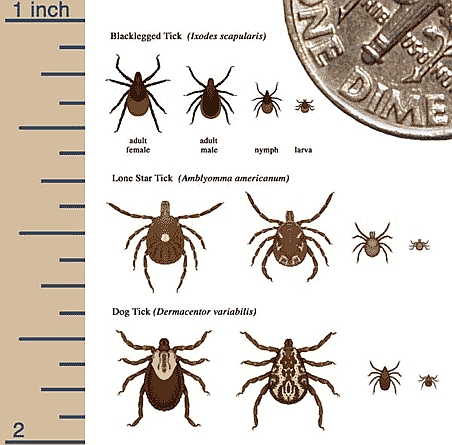Introduction to Lyme Disease:
Lyme disease is one of three common vector-borne diseases that affects not only animals but also humans. This disease is transmitted by the bacte rium Borrelia burgdorferi and is considered a zoonotic disease (able to be transferred from animal to human) that is most commonly reported, especially in our canine friends. According to the Center for Disease Control and Prevention, Lyme disease can be hard to detect and difficult to treat.1 This disease is transmitted via infected tick bites and animals are best protected by taking preventative measures to prevent tick bites and vaccinating against the disease when appropriate. Lyme disease is considered a reportable disease and health care providers and laboratories are required to notify their local and state health departments.1
rium Borrelia burgdorferi and is considered a zoonotic disease (able to be transferred from animal to human) that is most commonly reported, especially in our canine friends. According to the Center for Disease Control and Prevention, Lyme disease can be hard to detect and difficult to treat.1 This disease is transmitted via infected tick bites and animals are best protected by taking preventative measures to prevent tick bites and vaccinating against the disease when appropriate. Lyme disease is considered a reportable disease and health care providers and laboratories are required to notify their local and state health departments.1
Symptoms & Treatment of Lyme Disease
Symptoms of Lyme disease may not appear in patients for 2-5 months, when symptoms do show up they are often the following1:
- Fever
- Loss of Appetite
- Lameness
- Joint Swelling
- Joint Pain
- Decreased Activity

Symptoms of Lyme disease vary patient to patient and some may have recurrent lameness. Joints in affected patients may be very tender in the extremities and may migrate from one leg to another. Lyme disease is commonly diagnosed by using a SNAP 4DX Plus test that uses a small amount of blood to detect antibodies/antigens for several diseases. This particular test identifies three tick-borne diseases (Lyme, Anaplasmosis, Ehrlichia) along with Heartworm. A positive test result for Lyme confirms that the patient has been exposed at some time to the bacterium.
Treatment for Lyme disease is often antibiotics but it is very important for clients to follow the advice of your veterinarian regarding any care after the initial diagnosis and treatment of a patient with Lyme disease. Antibiotics may be prescribed for several weeks to several months depending on the severity of the disease.2 In some cases, even after initial treatment the infection may persist and medications may be needed longer as needed for recurring symptoms.
Prevention of Lyme & Other Tick Borne Diseases
Prevention is key to any disease. The most important way to prevent your pet from contracting Lyme, Anaplasmosis, and Ehrlichia is giving tick preventatives1. Ticks can be seen from the time the ground thaws until the deep freeze, and this is the most important time to take preventative measures for your furry friends. The months are typically May through November in the northern US. Speak with your veterinarian about what reliable product for prevention is recommended. Many clinics offer both oral and topical preventatives such as Nexgard and Frontline respectively. Your veterinarian also offers the Lyme vaccination for canines as another form of prevention against this disease; ask your vet if this vaccine would be a good option for your dog. Another way that you can minimize the contraction of the tick-borne diseases is to avoid areas where ticks may be found and make sure you check both yourself and your pets after exposure. Important areas to check for ticks are under the arms, in between digits of their paws, in and around ears, and along the belly.
